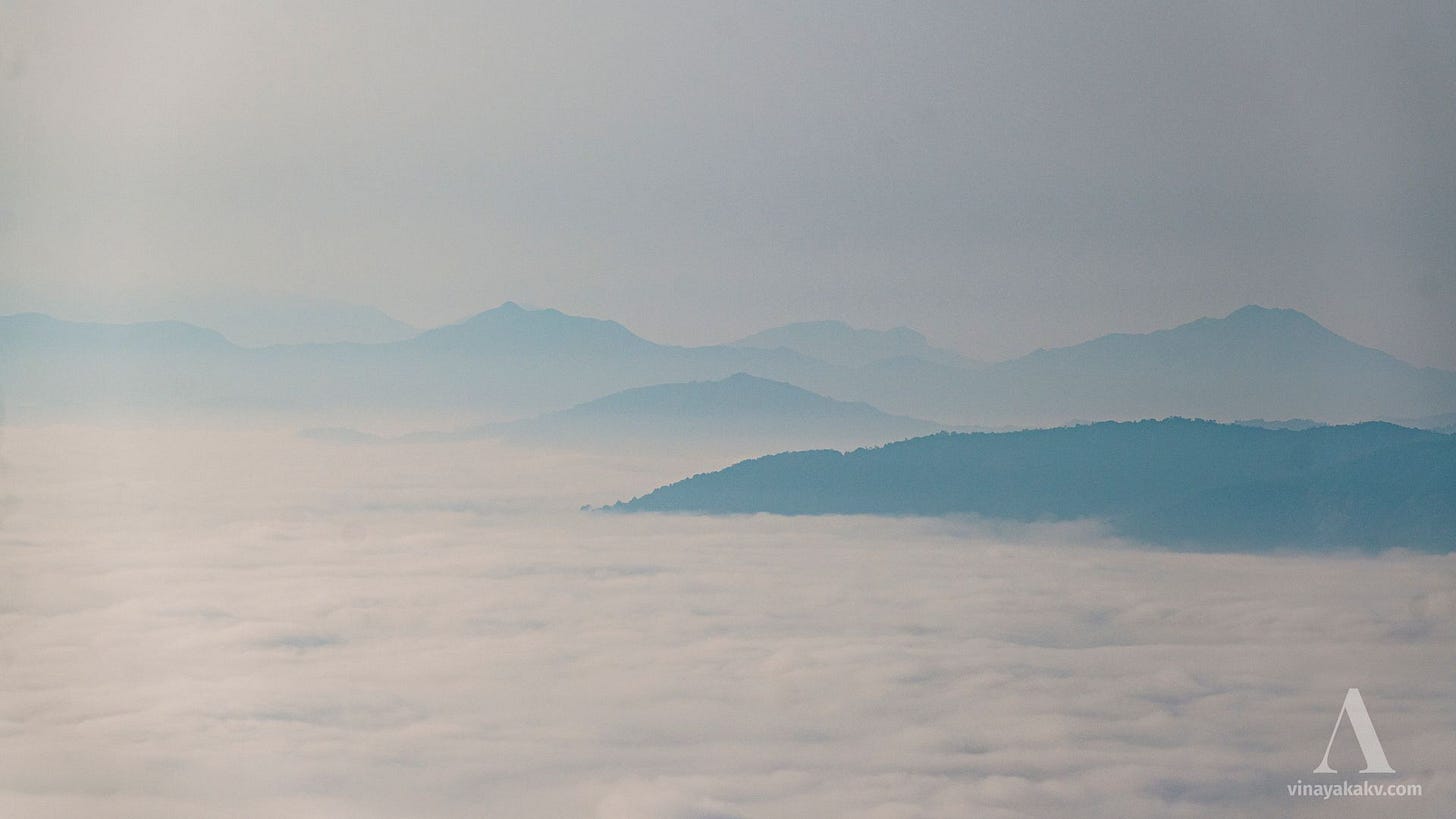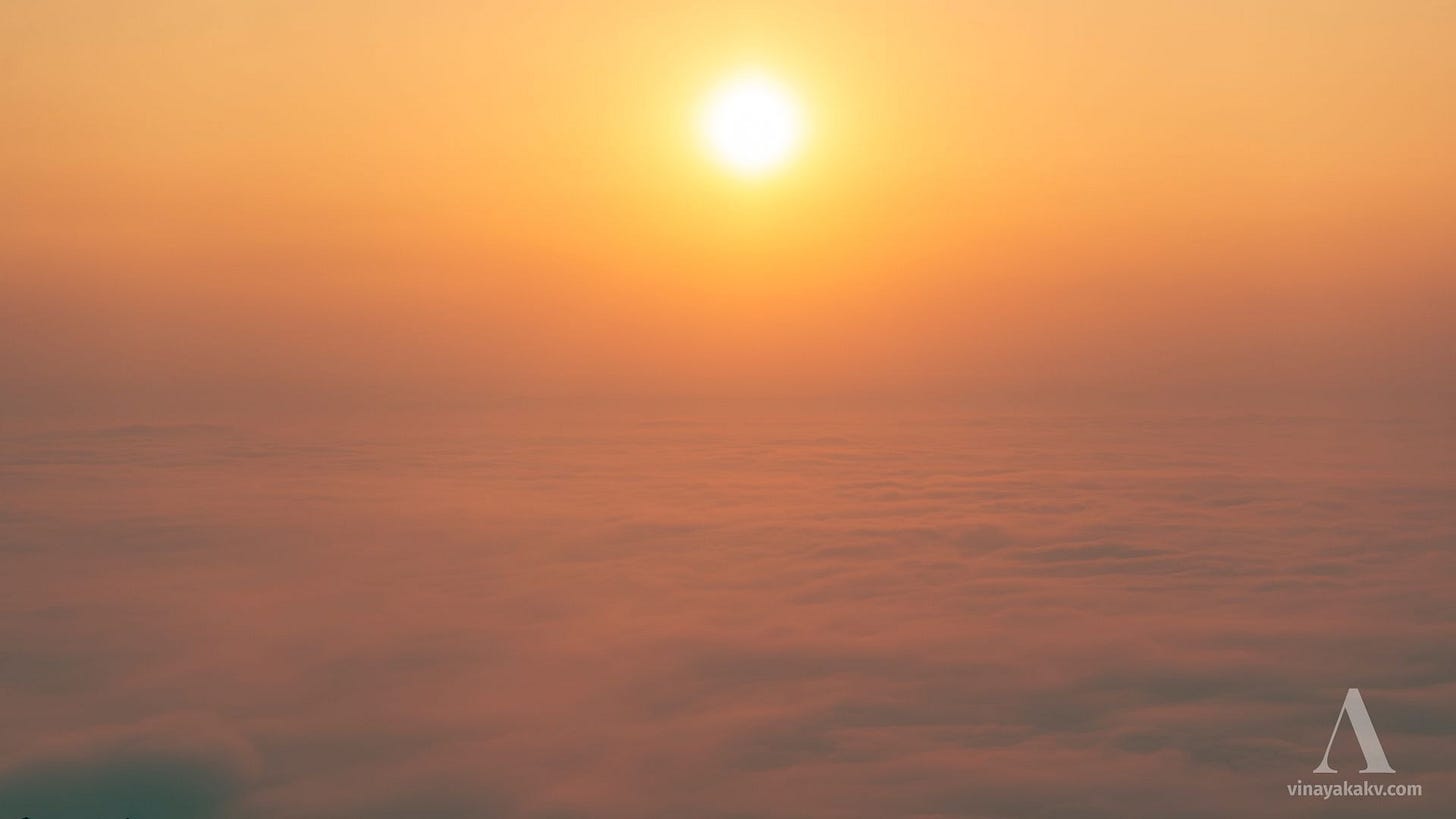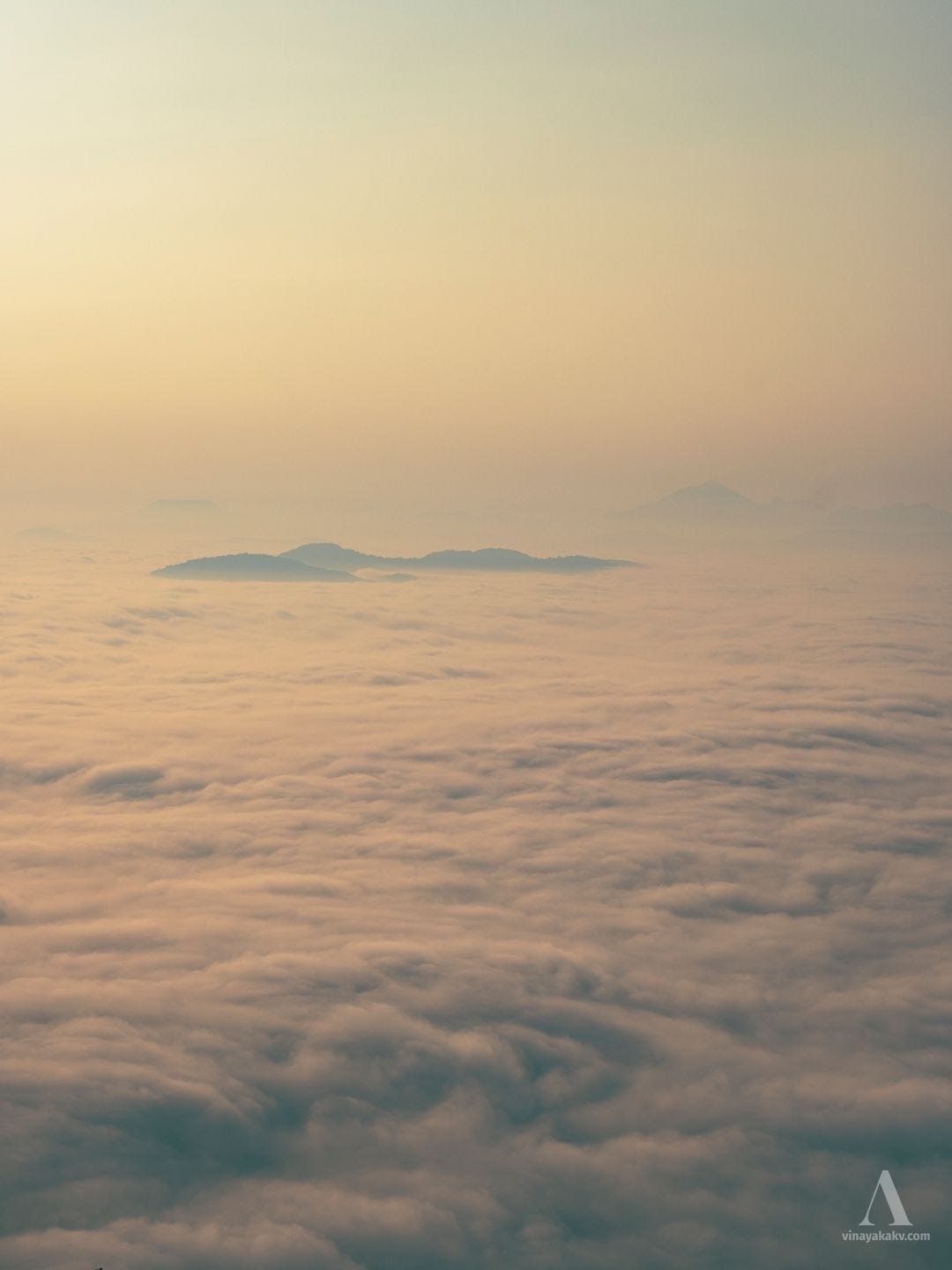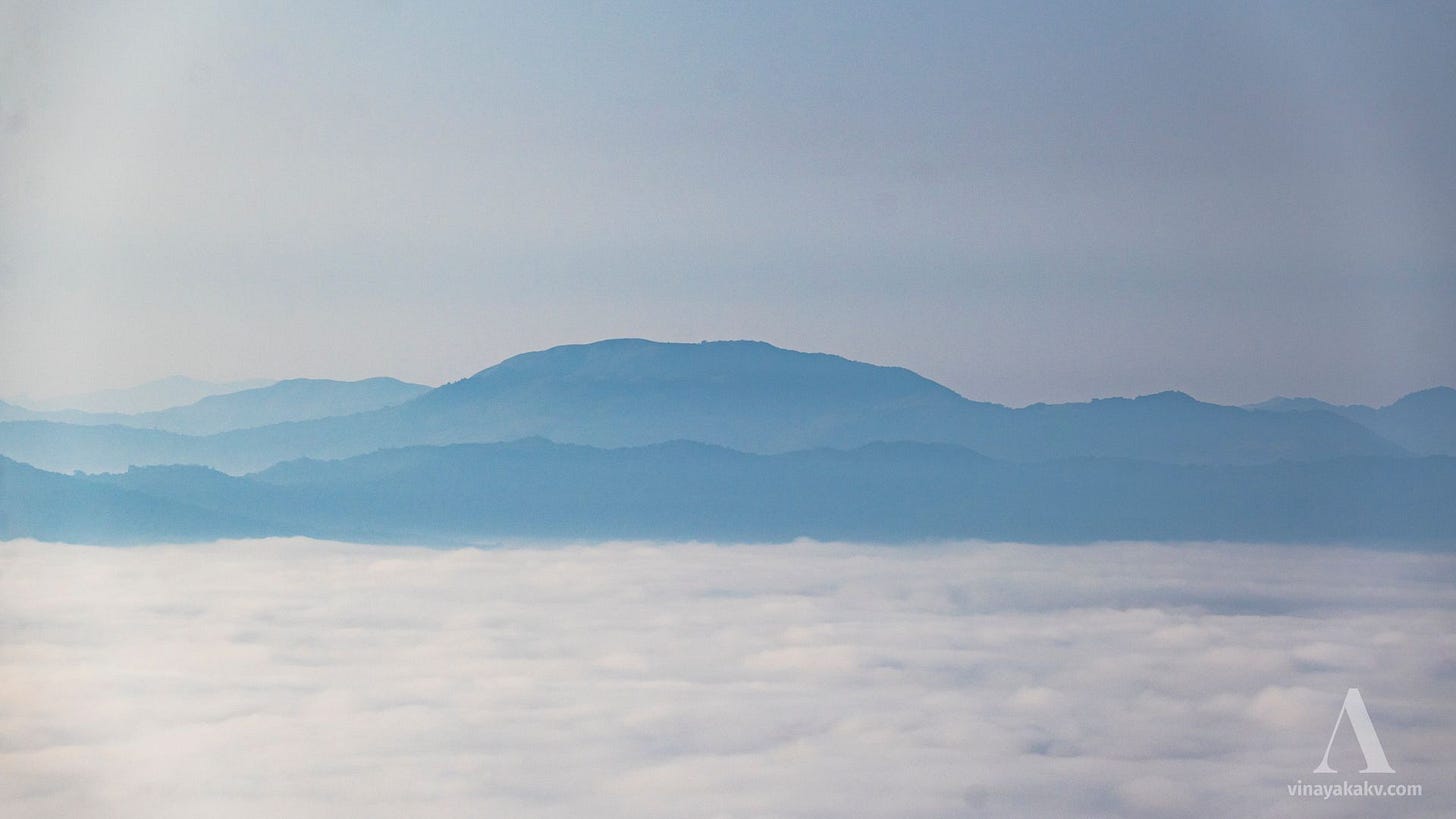Mountains in the middle of a High Sea
The Magic of the Inversion – A Journey Above the Clouds
Pumped up by my recent success of catching the mountains above the inversion layer, I decided to ascend another mountain with the help of a friend. As usual for inversions, we had to sacrifice sweet morning sleep and start early.
The mountain we visited stood at 976m above sea level. It was not as tall as the one I visited last time. Although we missed the sunrise mark by few minutes, the early morning sun greeted us with chill warmth appearing above a sea of inversion clouds.
The clouds looked static, although they had a slight movement due to wind. Sometimes, they organized into interesting patterns.
Out of the clouds, several mountains stood up with their high summits. Out of them, the conical Mertiparvata (1659m) with its five pointy peaks, behind another mountains with pointy peak stood out well.
The nearby peak of Narasimhaparvata (1159m) was pretty well visible, partly lit by morning sun.
Several prominent peaks of Kuduremukha National Park, where the rivers Tunga and Bhadra originate, stood out prominently.

To further southwest of these mountains, the distinct summit of Valikumja (1089m) stood out behind several small foothills covered with deep jungle.
Beside Mertiparvata, the Durgada betta (1221m) created a unique view in the layers of mountains.
As the sun rose, the clouds did not clear up as quickly as we had expected. They lingered as long as the mist stayed in the lower elevations, sometimes until around 9AM. Although the visibility was not as good as we had hoped, and we could not see the Chandradrona Range of Chikkamagalur, and despite missing the sunrise by a few minutes, we departed with a sense of satisfaction — the view of the stationary clouds and the distant mountains was meditative enough to send one into a temporary nirvana.









